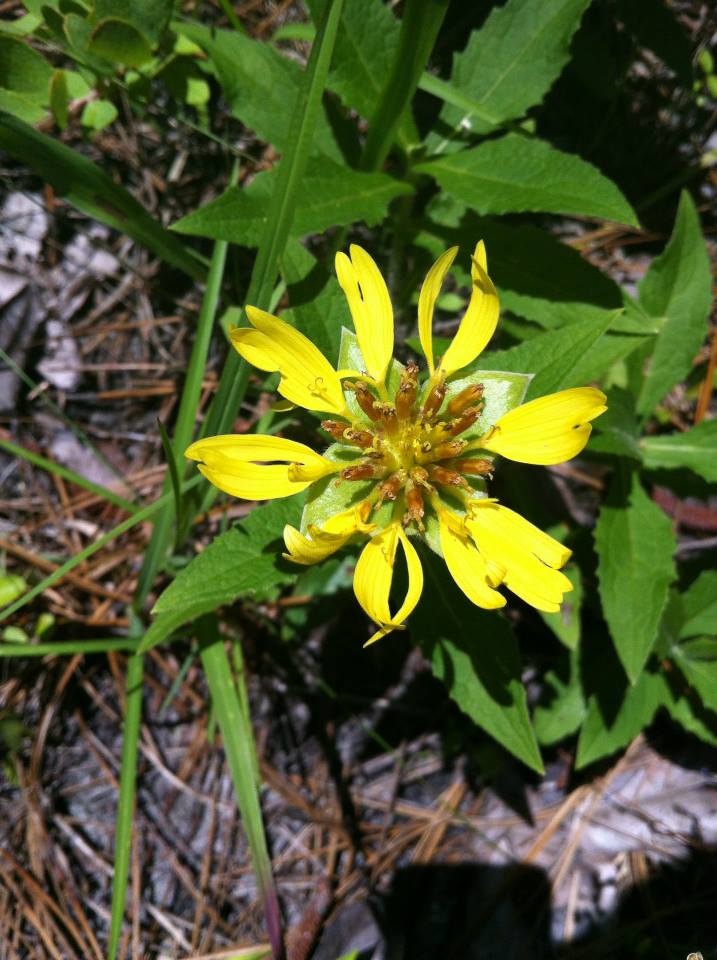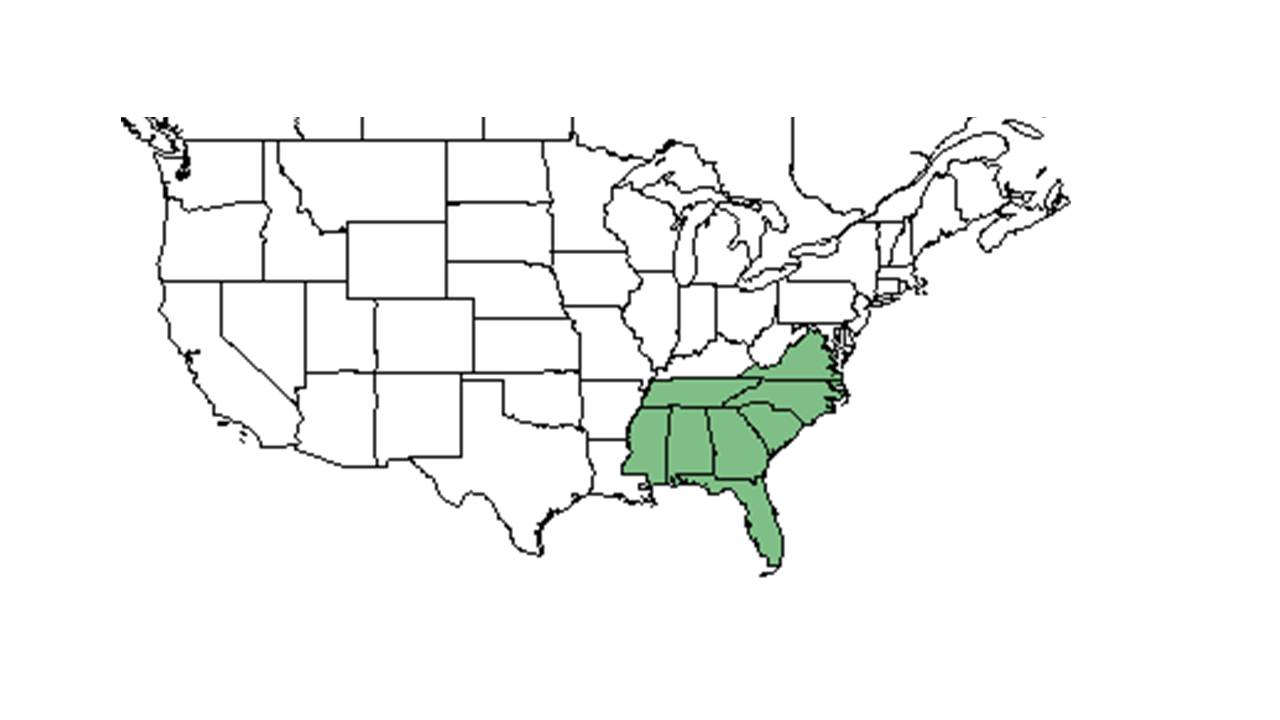Difference between revisions of "Tetragonotheca helianthoides"
KatieMccoy (talk | contribs) |
KatieMccoy (talk | contribs) |
||
| Line 27: | Line 27: | ||
==Ecology== | ==Ecology== | ||
===Habitat=== <!--Natural communities, human disturbed habitats, topography, hydrology, soils, light, fire regime requirements for removal of competition, etc.--> | ===Habitat=== <!--Natural communities, human disturbed habitats, topography, hydrology, soils, light, fire regime requirements for removal of competition, etc.--> | ||
| − | In the Coastal Plain in Florida, ''T. helianthoides'' has been found growing in the shade of a oak-hickory forest; loamy sand along the edge of a oak-pine-sassafras secondary woodland; loamy sand along wet pine flatwoods; scrub oak woods; mixed oak woodland; mixed deciduous flatwoods; longleaf pine slope above a ''Chamaecyparis'' thicket; scrub oak sandridge; burned longleaf pinewoods; sandy oak-pine forested uplands; loamy sand of pine-oak slopes above small seepage slopes; pine-turkey oak woods; and slash pine-scrub oak flats(FSU Herbarium; Heuberger et al. 2003). | + | In the Coastal Plain in Florida, ''T. helianthoides'' has been found growing in the shade of a oak-hickory forest; loamy sand along the edge of a oak-pine-sassafras secondary woodland; loamy sand along wet pine flatwoods; scrub oak woods; mixed oak woodland; mixed deciduous flatwoods; longleaf pine slope above a ''Chamaecyparis'' thicket; scrub oak sandridge; burned longleaf pinewoods; sandy oak-pine forested uplands; loamy sand of pine-oak slopes above small seepage slopes; pine-turkey oak woods; and slash pine-scrub oak flats(FSU Herbarium; Heuberger et al. 2003). It has been observed to grow in disturbed habitats such as powerline corridors, the ecotone between mixed hardwoods and burned pine-oak woods, open fields, roadside ditches, and wet depressions. |
| + | |||
| + | Substrate types include sand, red sandy soil, gravel, and loamy sand (FSU Herbarium). Associated species include ''Myrica, Liquidambar'', and ''Chamaecyparis'' (FSU Herbarium). | ||
===Phenology=== <!--Timing off flowering, fruiting, seed dispersal, and environmental triggers. Cite PanFlora website if appropriate: http://www.gilnelson.com/PanFlora/ --> | ===Phenology=== <!--Timing off flowering, fruiting, seed dispersal, and environmental triggers. Cite PanFlora website if appropriate: http://www.gilnelson.com/PanFlora/ --> | ||
Revision as of 14:10, 14 October 2015
| Tetragonotheca helianthoides | |
|---|---|

| |
| Photo taken by Michelle M. Smith | |
| Scientific classification | |
| Kingdom: | Plantae |
| Division: | Magnoliophyta – Flowering plants |
| Class: | Magnoliopsida – Dicotyledons |
| Order: | Asterales |
| Family: | Asteraceae ⁄ Compositae |
| Genus: | Tetragonotheca |
| Species: | T. helianthoides |
| Binomial name | |
| Tetragonotheca helianthoides L. | |

| |
| Natural range of Tetragonotheca helianthoides from USDA NRCS Plants Database. | |
Common name: pineland nerveray
Contents
Taxonomic notes
Description
A description of Tetragonotheca helianthoides is provided in The Flora of North America.
Distribution
Ecology
Habitat
In the Coastal Plain in Florida, T. helianthoides has been found growing in the shade of a oak-hickory forest; loamy sand along the edge of a oak-pine-sassafras secondary woodland; loamy sand along wet pine flatwoods; scrub oak woods; mixed oak woodland; mixed deciduous flatwoods; longleaf pine slope above a Chamaecyparis thicket; scrub oak sandridge; burned longleaf pinewoods; sandy oak-pine forested uplands; loamy sand of pine-oak slopes above small seepage slopes; pine-turkey oak woods; and slash pine-scrub oak flats(FSU Herbarium; Heuberger et al. 2003). It has been observed to grow in disturbed habitats such as powerline corridors, the ecotone between mixed hardwoods and burned pine-oak woods, open fields, roadside ditches, and wet depressions.
Substrate types include sand, red sandy soil, gravel, and loamy sand (FSU Herbarium). Associated species include Myrica, Liquidambar, and Chamaecyparis (FSU Herbarium).
Phenology
Seed dispersal
Seed bank and germination
Fire ecology
Arata noted that T. helianthoides appeared in late May/ early June after burning in mid-winter (1959).
Pollination
Use by animals
Diseases and parasites
Conservation and Management
Cultivation and restoration
Photo Gallery
References and notes
- Arata, A. A. 1959. Effects of burning on vegetation and rodent populations in a longleaf pine-turkey oak association in north central Florida. Quarterly Journal of the Florida Academy of Sciences 22:94-104.
- Heuberger, K. A. and F. E. Putz. 2003. Fire in the suburbs: ecological impacts of prescribed fire in small remnants of longleaf pine (Pinus palustris) sandhill. Restoration Ecology 11:72-81.